Home > Auctions > 9 - 17 September 2025
Ancient Art, Antiquities, Books, Natural History & Coins
Private collection, Contessa L.J., since the 1980s.
Private collection, Switzerland, 2001.
This lot has been cleared against the Art Loss Register database, and is accompanied by an illustrated lot declaration signed by the Head of the Antiquities Department, Dr Raffaele D'Amato.
From a private family collection formed since the early 19th century, thence by descent.
Property of a New Zealand legal professional.
Accompanied by an academic report by Dr Raffaele D’Amato.
This lot has been checked against the Interpol Database of stolen works of art and is accompanied by search certificate number no.12326-223715.
This lot has been cleared against the Art Loss Register database, and is accompanied by an illustrated lot declaration signed by the Head of the Antiquities Department, Dr Raffaele D'Amato.
See very similar earrings in the Metropolitan Museum, accession no. 1995.180a,b; Schmidt, E.F., Persepolis I, Structures, Reliefs, Inscriptions, Chicago, 1953; Schmidt, E.F., Persepolis II, Contents of the Treasury and other discoveries, Chicago, 1957, pl.44 no.27; J.M., Gold Jewellery in Ptolemaic, Roman and Byzantine Egypt, In two volumes, Volume 2 – Figures, Durham, 1990; Ogden, J. and Williams, D., Greek Gold Jewelry of The Classical World, New York, 1994.
Fruit were generally considered to be a symbol of sensuality, temptation and fertility; the giving and accepting of fruit may be regarded as a symbolic sexual act, or at least a prelude to marriage. It follows naturally that the pomegranate, with its innumerable fleshy seeds symbolising life and fecundity, was an attribute of Aphrodite.
Ex private European collection, 1980s.
Private collection, Switzerland, acquired in 1998.
This lot has been cleared against the Art Loss Register database, and is accompanied by an illustrated lot declaration signed by the Head of the Antiquities Department, Dr Raffaele D'Amato.
UK private collection before 2000.
Acquired on the UK art market.
Private collection, London, UK.
This lot has been cleared against the Art Loss Register database, and is accompanied by an illustrated lot declaration signed by the Head of the Antiquities Department, Dr Raffaele D'Amato.
UK collection, 1990s.
Acquired on the UK art market, before 2000.
Private collection, Mr M.V., a London-based businessman.
This lot has been cleared against the Art Loss Register database, and is accompanied by an illustrated lot declaration signed by the Head of the Antiquities Department, Dr Raffaele D'Amato.
Acquired in the 1960s-1970s.
Kept in the UK since 1981.
This lot has been cleared against the Art Loss Register database, and is accompanied by an illustrated lot declaration signed by the Head of the Antiquities Department, Dr Raffaele D'Amato.
From the private family collection of Ersula Barter-Hemmerich, the longest serving member of staff working at the United Nations, her private collection formed in the 1950s and 1960s; thence by descent to her grandson.
This lot has been cleared against the Art Loss Register database, and is accompanied by an illustrated lot declaration signed by the Head of the Antiquities Department, Dr Raffaele D'Amato.
From the private family collection of Ersula Barter-Hemmerich, the longest serving member of staff working at the United Nations, her private collection formed in the 1950s and 1960s; thence by descent to her grandson.
This lot has been cleared against the Art Loss Register database, and is accompanied by an illustrated lot declaration signed by the Head of the Antiquities Department, Dr Raffaele D'Amato.
UK private collection before 2000.
Acquired on the UK art market.
Private collection, London, UK.
This lot has been cleared against the Art Loss Register database, and is accompanied by an illustrated lot declaration signed by the Head of the Antiquities Department, Dr Raffaele D'Amato.
From the private family collection of Ersula Barter-Hemmerich, the longest serving member of staff working at the United Nations, her private collection formed in the 1950s and 1960s; thence by descent to her grandson.
This lot has been cleared against the Art Loss Register database, and is accompanied by an illustrated lot declaration signed by the Head of the Antiquities Department, Dr Raffaele D'Amato.
From the collection of T.K., Germany, 1970s.
Acquired in 1992 by Mr R.K.
Acquired by the present owner on the UK art market.
Accompanied by an academic report by Dr Raffaele D'Amato.
This lot has been checked against the Interpol Database of stolen works of art and is accompanied by search certificate number no.12782-240166.
This lot has been cleared against the Art Loss Register database, and is accompanied by an illustrated lot declaration signed by the Head of the Antiquities Department, Dr Raffaele D'Amato.
Cf. Ohly, D., Die Ägineten, Die Ostgiebelgruppe, Munich, 1976; Pflug, H., 'Chalkidische Helme' in Antike Helme, RGZM Monographien 14, Mainz, 1988, pp.137-150; Chernenko, E.V., The Scythians 700-300 BC, Hong Kong, 1998; Jonovski, Trakits (The Thracians), 7th century BC-1st century AD, Sofia, 2010 (in Bulgarian); see similar helmets in Hixenbaugh, R., Ancient Greek Helmets, a complete guide and catalogue, New York, 2019, nos. X254-280, esp.X269 and X279.
Hinged cheek-pieces, like in our specimen, appeared in Thracia during the 4th century, but prototypes from the Pontic area and wider Greece show them already in use in the 5th century B.C. The traces of textile on the left part of our helmet show that it was stored inside a protective item -perhaps a case or bag – guarding it against atmospheric agents or possible damage when not in use.
Ex John Moore, York, UK, 1997.
Property of a North London, UK, gentleman.
Accompanied by an academic report by Dr Raffaele D'Amato.
This lot has been checked against the Interpol Database of stolen works of art and is accompanied by search certificate number no. 12789-240372.
This lot has been cleared against the Art Loss Register database, and is accompanied by an illustrated lot declaration signed by the Head of the Antiquities Department, Dr Raffaele D'Amato.
Cf. Robinson, R., The Armour of Imperial Rome, New York, 1975; Junkelmann, M., Römische Helme, Mainz, 2000, pp.138-141; Christie's, The Axel Guttmann Collection of Ancient Arms and Armour, part 1, London, 2002, pp.120-121, no.95; D'Amato, R., Arms and Armour of the Imperial Roman Soldier, London, 2009, fig.134, p.115; see also a helmet of the same typology in Axel Guttmann collection, nos. AG501 (Junkelmann, 2000, pp.138-19, figs.65-66, pl.XII); D’Amato, R., Roman Centurions 31 B.C.-A.D. 500, The Classical and Late Empire, Oxford, 2012.
This early category of helmets was characterised by a hemispherical calotte and a slightly sloping neck guard. They were fitted with a pair of prominent curved eyebrows (symbolising the wings of Jupiter's thunderbolts) flanking rivetted bosses.
157 - 168 of 3897 LOTS

.jpg)
.jpg)


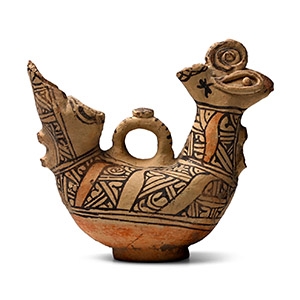
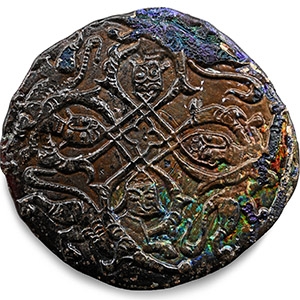

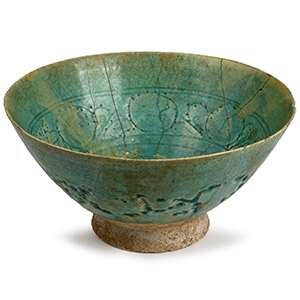
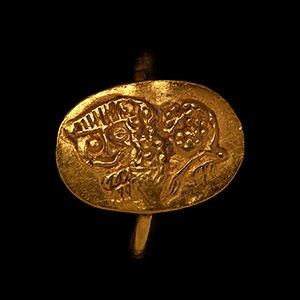
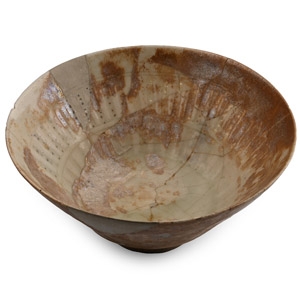
.jpg)
.jpg)



